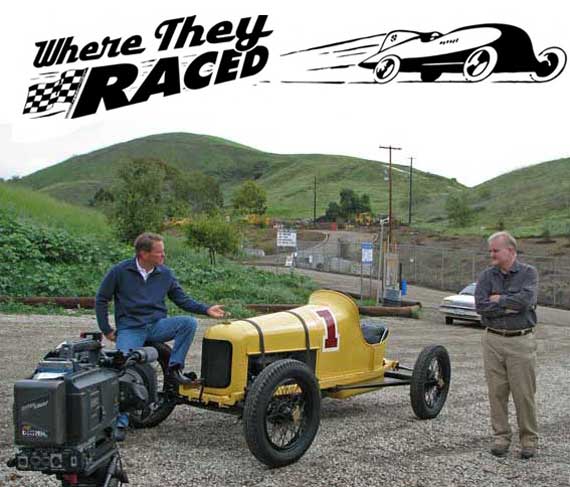 Above, Rick Rawlins, left and Host Harold Osmer at work on a new documentary.
Above, Rick Rawlins, left and Host Harold Osmer at work on a new documentary.
By Pete Vack
We recently received an email inviting us to watch a new video presentation. Noticing the Harry Miller-Indy 1914 Peugeot connection we thought we’d better pay it some attention.
We are glad we did, for this is not your grandson’s YouTube. Forget YouTube. The videos presented on the site, “Where They Raced“ are right up our alley. The Peugeot episode, “The Holy Grail”, is the story of the seminal 1914 Grand Prix Peugeot and is an excellent, professionally produced, historical documentary that could well have been moderated by Griff Borgeson himself (here Rick Rawlins did the MC work). And just as good was a previous episode, Speed Demons in the City of Los Angeles, was done so well ala Ken Burns, that we were blown away. These are not one time flukes; there are three episodes so far and more are added weekly.
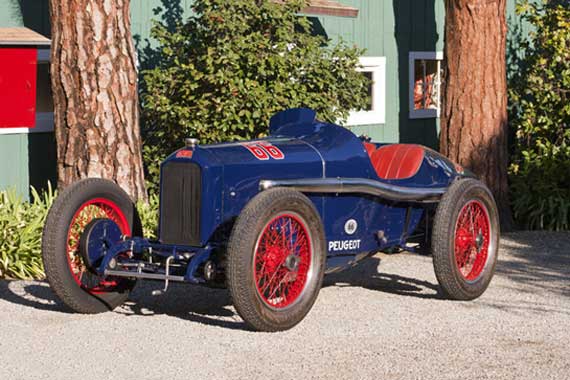
Collector Rick Rawlins described the relationship between the 1916 Peugoet L45 and the Harry Miller Dynasty.
So what’s new?
You say there are videos like this everywhere? Yes, of course. But here’s some background. Many years ago, Speed Vision, before Fox, was producing or buying this type of documentary but found them too expensive without enough of an audience. Fox bought out Speed Vision and later, and very occasionally, the bean counters would allow what became SpeedTV to produce a short documentary or special (and excellent) show such as “Behind the Headlights” (see our interviews with Bob Varsha to find out why these programs failed.) We wanted more but it was not to be.
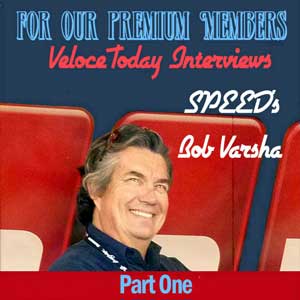 There were good, but if you ever watched a History Channel Documentary on cars, you know how bad they can be.
There were good, but if you ever watched a History Channel Documentary on cars, you know how bad they can be.
Search the market and one will find some excellent historical documentaries, but all are full length DVDs. Enter today’s Internet/smart phone environment and go to YouTube where you can see all sorts of snippets of great video, new and ancient, but rarely, if ever are such video clips put into a meaningful, accurate and interesting program, nor are there enough MBs to support such an effort.
This is a professional effort
We found that Where They Raced.com is the home of some of the best documentaries we’ve see of any type and was hitting right to home; a home run, in fact, with the episode on the Indy Peugeot. WTR is a full professional effort and these guys know their stuff. There are no distracting ads that you must put up with (yet anway). These gems are produced with the Internet attention span in mind…each mini documentary is roughly ten minutes long (though some maybe longer). They are free (yet anyway).
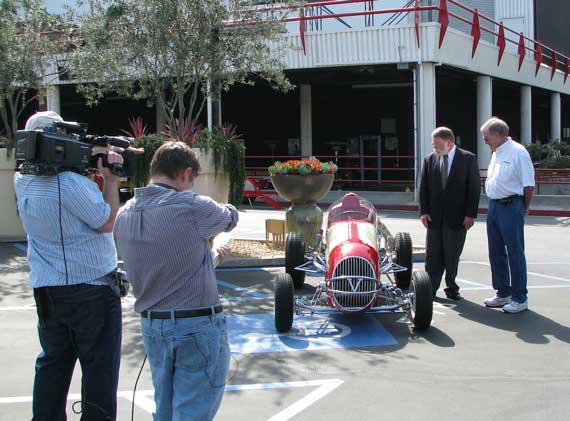
The Crew goes where it happened: Hank Hilty (Earl Gilmore's grandson), Vic Edelbrock Jr. Helmut with camera and Pallenberg on the former back straight of Gilmore Stadium.
The Future of Internet Magazines
We were hooked, for this is the future of Internet magazines. The widespread availability of hi speed internet and bags of bandwidth, the introduction of YouTube, video creation software, digital video cameras and finally, new, YouTube-like services for business, such as Vimeo suddenly allow one to create and present videos free of ads and have almost unlimited amounts of server space to afford long, complex three track documentaries, shows and more with little or no money.
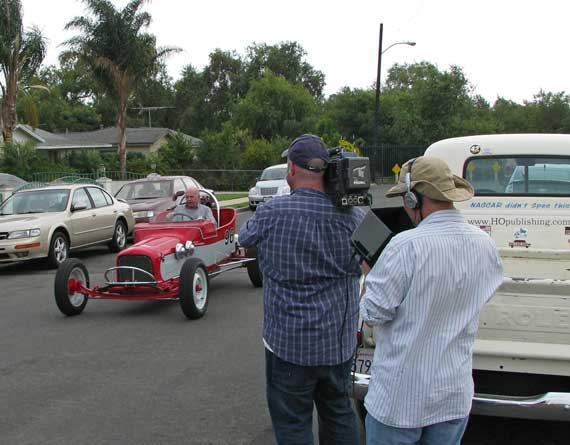
Tom Malloy around turn 4 of the old Carrell Speedway; Pallenberg at the monitor and Helmut on camera.
All you really need today are is equipment, talent, experience, materials, copyrights, time, audience and a burning desire to tell stories via videos and documentaries.
Harry and Harold
And that is where we introduce WTR’s guiding light. Harry Pallenberg, like you and I, is a diehard enthusiast but one with all of the above to create excellent automotive documentaries. In 2000, Pallenberg was the producer of a popular PBS show California’s Gold hosted by Huell Howser. There he met Harry Osmer, who was giving a geography dissertation about how Los Angeles was in part shaped by the large number of race tracks that were common at the turn of the century. By 2002 Osmer had turned his dissertation into a book called Where They Raced. Pallenberg and Osmer would talk every year or so about bringing more of this lost and forgotten racing history to light via a documentary.
Says Pallenberg, “I would collect rare photos or footage whenever I could. I worked at PBS in Los Angeles for 15 years and built a lot of strong relationships with just about all the museums, historical societies and archives. I have been able to get some images / footage for free… the rest I had to pay for but usually at a good rate.”
Then finally in 2009 Pallenberg decided to just quit talking about the documentary with Osmer and just did it. “I saw that more and more of the people and locations that could tell this story were slipping away, so I grabbed a camera, got Harold and we just started shooting.”
Many of the museums, libraries and archives see what Pallenberg and Osmer are doing as a good thing and are happy to let the images be a part of preserving this history. “They would much rather see it used than just sitting in a file unseen by all but the most devoted researcher.”
Money makes the film go around
Raising money to sustain the documentaries being now made for “Where They Raced” is more difficult. When approaching the TV networks he found that most seem to want something more in the reality format. But Pallenberg held his course. “I wanted to do a more historical old school PBS / BBC style doc – so that’s what I’m doing, with the help of Tom Malloy, Hank Hilty and Steve Lewis.”
If you are interested in what the guys at Where They Raced are doing, watch the videos and send them an email. Either it will be an enthusiast supported effort, or will go the way of SpeedVision. Up to us.
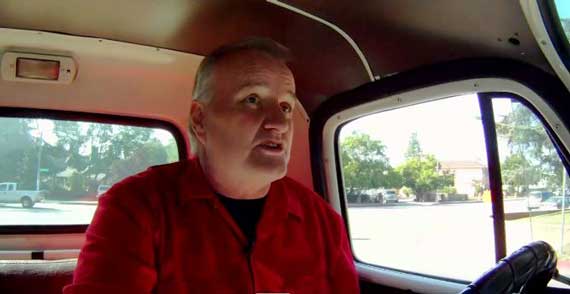
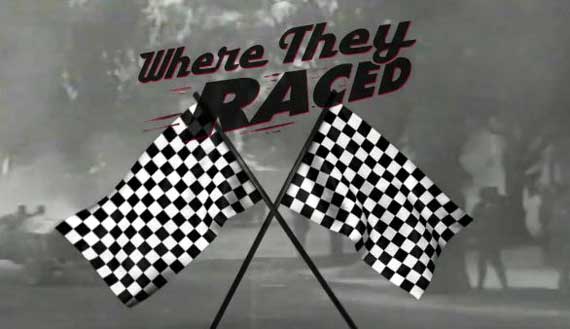
Interesting, but I just have basic comcast cable so probably won’t be able to see the videos… my CD book (see website) covers race venues but is far more interested in the people involved in the history of European transportation. Currently mapping sites on bing (over 300 in Germany) for an interview with Rudy Maxa, and am hoping to build some marque specific tour routes with the mapping.
I’m still hoping someone will buy our tapes of the two live full length CanAm ’71 races at Watkins Glen and Mid-Ohio; the organizers of the Silverstone vintage race were interested but nothing came of that.